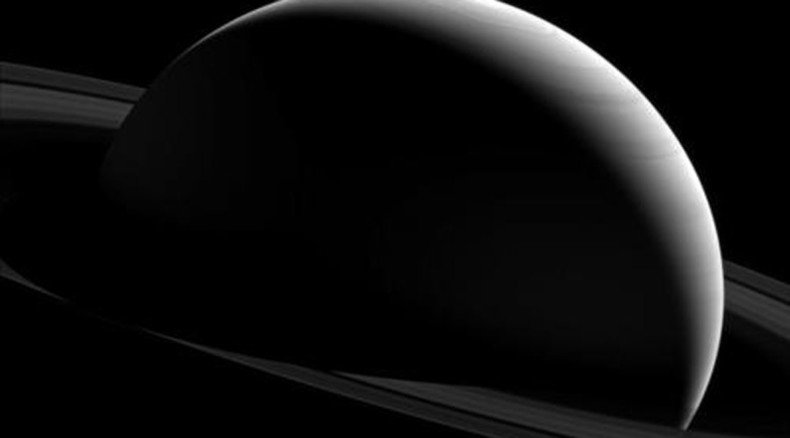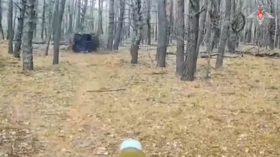Dark side of Saturn: NASA releases new image of ringed planet at night

NASA has shown off Saturn from a rare dark side, as the agency has released a new shot of the ringed planet and one of its mysterious ice moons, Tethys, taken at night.
The wide-angle camera of the Cassini spacecraft captured the night footage of Saturn at a distance of approximately 1.5 million miles (2.4 million kilometers) from the planet.
The photo, at a scale of 88 miles (141 kilometers) per pixel, shows part of Saturn and its ring plane while the larger part of is totally dark. This chiaroscuro effect – an interplay of absolute darkness and bright light - is actually a completely natural phenomenon.
“We know that shadows are darker areas than sunlit areas, and in space, with no air to scatter the light, shadows can appear almost totally black,” NASA said in a press release.
Peering from shadows, @CassiniSaturn spacecraft sees night side of Saturn & its moon Tethys: http://t.co/4jLNTgljl0pic.twitter.com/jvm12Wl7fN
— NASA (@NASA) September 14, 2015In the light, there is a clear outline of Saturn’s polar hexagon – a giant, six-sided jet stream that has swirled around the planet's North Pole – at top center.
This view looks toward the sunny side of the rings from about 10 degrees above the ring plane.
That bright spot in the lower left corner of the picture – just below the ring – is not dust on your screen, but one of Saturn’s mysterious ice moons, Tethys.
If you can't sleep count Saturn's Moons
#NASA#SpaceX#ISS#NASASocial#NASABeyond#ThankYouNASA#NASAVillagepic.twitter.com/YTUDQBVjIt
— Turin (@R2ROCKOFFICIAL) September 8, 2015It is 660 miles (1,062 kilometers across) and it has been enhanced three brighter to increase its visibility.
Earlier in July, NASA shared first quality color pictures of Tethys’ north face.
Unusual red streaks’ spotted on Saturn’s Tethys (PHOTOS) http://t.co/YatWWbPslCpic.twitter.com/cMgwjH9rMg
— RT America (@RT_America) August 1, 2015The international Cassini spacecraft – a joint project between NASA, ESA (The European Space Agency) and the Italian Space Agency – has been in orbit around Saturn since 2004.












